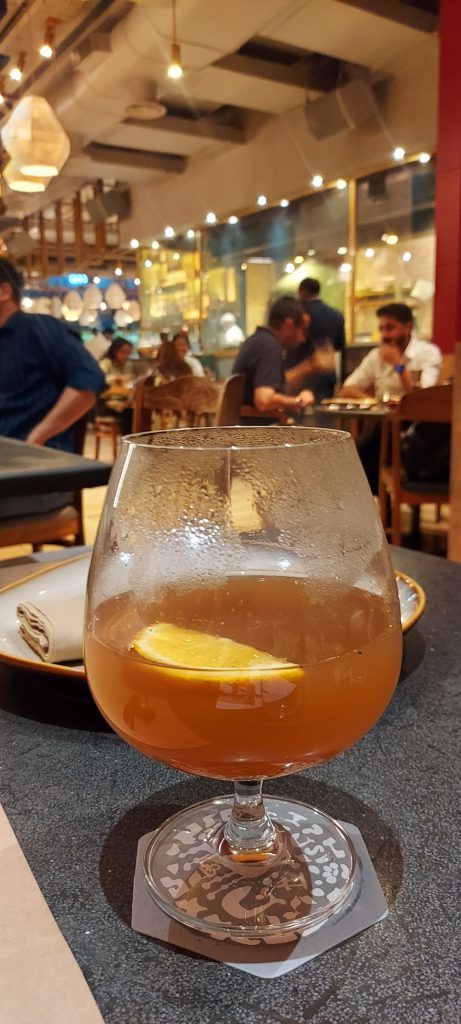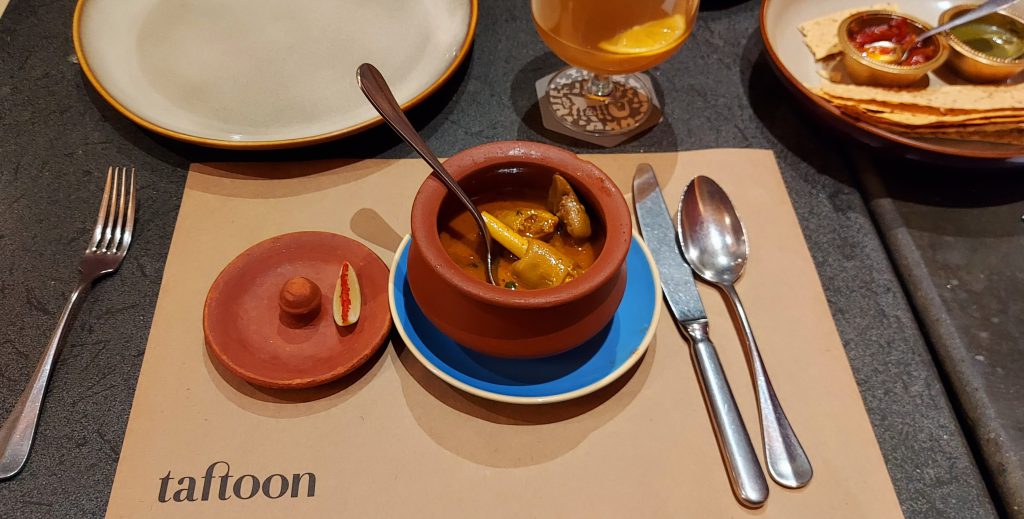Nestled in Mumbai’s Bandra Kurla Complex, Taftoon isn’t just a restaurant; it’s a gastronomic expedition along the historic Grand Trunk Road. This ancient route, stretching 2,500 kilometers from Kabul to Kolkata, has been a conduit of culinary exchange for over two millennia.
The restaurant’s name, derived from the Persian “taftan” meaning “to heat,” refers to the leavened bread that has been a staple along this route since the 16th century. Taftoon’s menu is a carefully curated homage to this rich history, offering dishes that span the breadth of the Indian subcontinent.

Cocktails here are not mere aperitifs but liquid history lessons. The Hot Toddy, traditionally used as a cold remedy in British India, is given new life with local spices. “Peat It Out” cleverly combines the Scottish influence in colonial India with indigenous florals, creating a drink that bridges continents. The standout “Milk Me Bread” cocktail ingeniously deconstructs the flavours of taftoon bread itself – the rum echoing the fermentation, coconut milk representing the bread’s softness, lemon juice for tanginess, and saffron bits as a nod to the bread’s often golden hue.
Starters are a testament to the diversity of the Grand Trunk Road’s cuisine. The Galouti Kebabs, originally created for a toothless Nawab of Lucknow, showcase the Awadhi culinary art of tenderizing meat to silk-like consistency. The Seafood Pide is a clever nod to the Ottoman influence that seeped into Indian cuisine through centuries of trade, with rosemary adding a Mediterranean flourish.

Main courses continue this historical narrative. The Pomfret Roast honours the coastal regions’ contributions to the inland spice route, while the tomato gravy speaks to the Portuguese introduction of tomatoes to Indian cuisine in the 16th century. The Nalli Nihari, a dish with origins in the communal kitchens of Jama Masjid in Delhi, represents the zenith of Mughlai cuisine. Its accompaniments – saffron roti and poppy seed bread – are reminders of India’s status as the world’s largest producer of both saffron and poppy seeds.
Taftoon’s commitment to authenticity extends to their ingredients. They source specific varieties of rice from the banks of the Indus River, use black salt (kala namak) from the salt ranges of Punjab, and incorporate Kashmiri chilies known for their colour more than their heat. The restaurant even employs traditional cooking methods, using clay ovens (tandoors) and heavy-bottomed copper vessels (deghs) to recreate the flavours of dhabas and royal kitchens alike.
The restaurant’s decor is equally thoughtful. Walls adorned with replicas of Mughal miniature paintings and calligraphy in Nastaliq script transport diners to the courts of emperors. The seating arrangement, reminiscent of a caravanserai, encourages communal dining – a nod to the shared meals of travellers along the Grand Trunk Road.

As you conclude your culinary journey at Taftoon, the traditional Persian farewell “Nooshe Jan” (may your soul be nourished) takes on a deeper meaning. You leave not just satiated, but enriched with a taste of history that spans empires, trade routes, and culinary revolutions. Taftoon doesn’t just serve food; it serves time travel on a plate, making it a must-visit for history buffs and gourmands alike.


